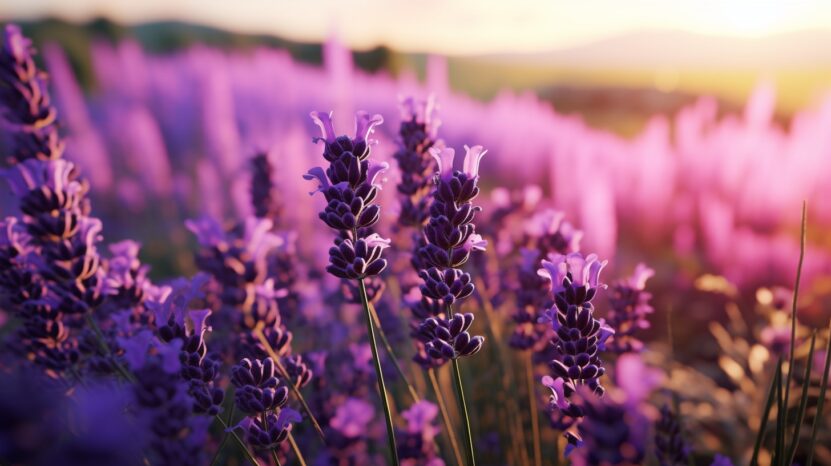Lavender, with its enchanting fragrance and vibrant blooms, is a favorite among gardeners and nature enthusiasts alike. This blog post delves into the world of lavender, focusing on the most fragrant varieties to enhance your garden. We’ll explore different types of lavender, their unique characteristics, and how to care for them, ensuring your garden is a haven of aroma and beauty.
Impact of Environment on Lavender Fragrance
The fragrance of lavender is significantly influenced by its growing conditions. Sunlight, rainfall, and the harshness of winter all play a crucial role in the development of the plant’s aromatic oils. Lavenders thrive in well-drained soil and need ample sunlight to flourish.
In regions with mild winters and hot, dry summers, lavenders tend to produce a more potent fragrance. Conversely, in humid or very wet climates, lavenders may struggle to develop their full aromatic potential.
Soil Type and Harvest Timing
The type of soil in which lavender is planted also affects its fragrance. Lavenders prefer slightly alkaline, sandy, or gravelly soils. The timing of the harvest is crucial too. For the most intense fragrance, lavenders should be harvested when the buds are just about to open.
The oils are most concentrated at this stage, leading to a more robust aroma. Post-harvest processing also plays a part; drying the lavender soon after harvesting helps in preserving its fragrance.
English Lavender: A Fragrance Powerhouse
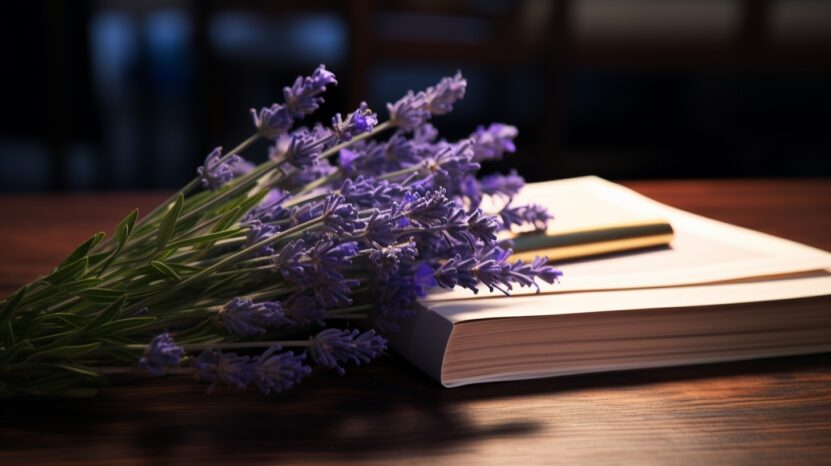
English Lavender (Lavandula angustifolia) is renowned for its exceptional fragrance. On our farm, we grow several cultivars known for their aromatic qualities, such as ‘Buena Vista’, ‘Folgate’, ‘Maillette’, ‘Royal Velvet’, ‘Sharon Roberts’, and ‘Tucker’s Early Purple’.
Each of these has a unique scent profile, ranging from sweet and floral to more complex, herbaceous notes. These varieties are not just a feast for the nose but also a visual delight, with vibrant colors and lush foliage.
Lavandins: The Fragrant Hybrids
Lavandins (Lavandula x intermedia), a hybrid of English Lavender, are also highly fragrant. Cultivars like ‘Grosso’ and ‘Provence’ are particularly noted for their strong aroma. These plants tend to be larger and more robust than their English counterparts, making them a striking addition to any garden.
Their fragrance is less sweet but more intense, often with a hint of camphor, making them ideal for use in sachets and dried arrangements.
The Aesthetic Appeal
When it comes to adding a splash of color to your garden, certain lavenders stand out. English lavender cultivars like ‘Hidcote’, ‘Imperial Gem’, ‘Purple Bouquet’, and ‘Royal Velvet’ are celebrated for their deep purple hues. These varieties not only bring a rich fragrance to your garden but also provide a stunning visual display.
The deep purple of ‘Hidcote’, for instance, is a favorite among gardeners for creating a dramatic contrast in flower beds and borders. Just as the colors and scents of these plants add depth to your garden, exploring the symbols in the leaves of your morning tea can offer a different kind of depth to your daily routine.
Lavenders with the Darkest Blue
For those seeking a cooler color palette, English lavender cultivars also offer the darkest blues. Varieties such as ‘Betty’s Blue’, ‘Blue Cushion’, and ‘Violet Intrigue’ are notable for their striking blue flowers. These plants can create a serene and calming effect in the garden, making them perfect for creating a space of relaxation and tranquility.
Our Top Favorite Lavender Plants
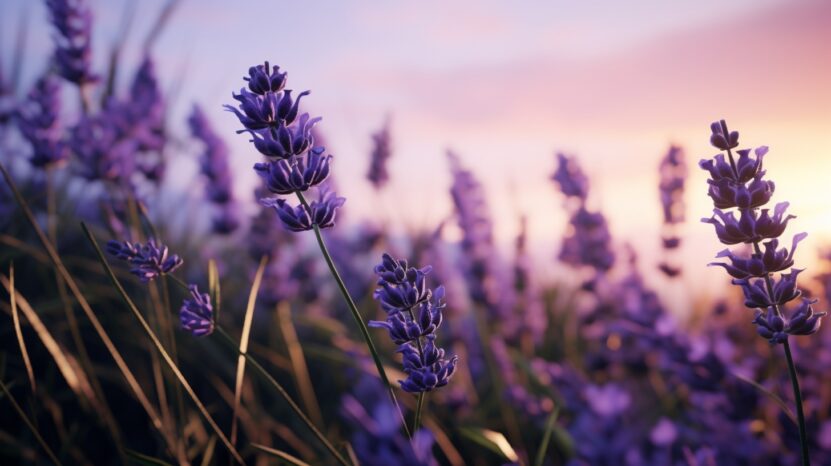
1. Lavandula angustifolia ‘Folgate’
‘Lavandula angustifolia Folgate‘ is a standout cultivar for several reasons. Its resilience in colder temperatures and early blooming nature make it a practical choice for many gardens. The periwinkle blue flowers are not only visually appealing but also versatile, perfect for both fresh and dried floral arrangements.
This cultivar’s ability to bloom multiple times a season adds to its allure, making it a garden favorite.
2. Lavandula angustifolia ‘Buena Vista’
‘Buena Vista’ is another English lavender that garners admiration for its delightful fragrance and rich purple color. Remarkably, it can bloom up to three times a year under optimal conditions. This variety is also used in culinary preparations, adding a sweet, floral note to dishes. Its versatility and vibrant color make it a valuable addition to any fragrant garden.
The Distinct Characteristics of English Lavender and Lavandin
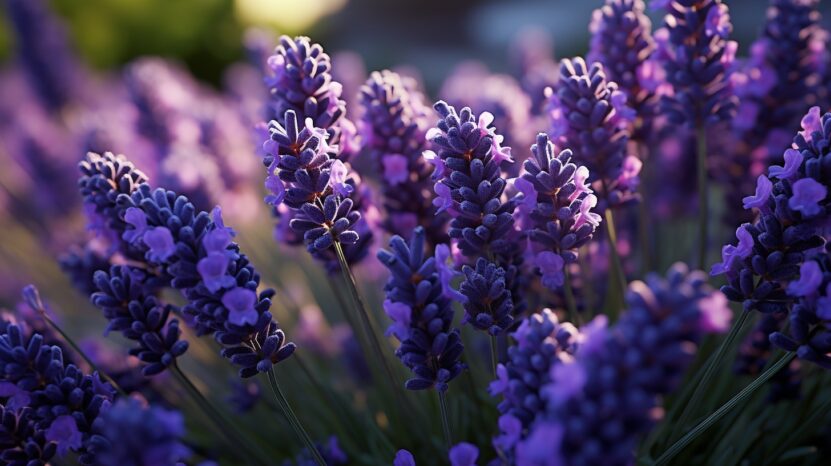
1. English Lavender (Lavandula angustifolia)
English lavender plants are known for their seed production and are the most common group of lavenders. Typically, they grow to a size of 18-24 inches and feature green/grey fragrant foliage with shorter leaves.
The flower stems are about 12 inches long, and the flowers emit a generally sweet fragrance. These cultivars come in a range of colors, blooming from early to mid-June in Southeastern Utah, with some varieties capable of multiple blooms in a season.
2. Lavandin (Lavandula x intermedia)
Lavandin, a hybrid between Lavandula angustifolia and Lavandula latifolia, forms larger plants, reaching up to 48 inches in height. The flowers are lighter in color, and the leaves are wider, longer, and grayer. Lavandins bloom later than English lavenders, usually from mid-July into August.
They require more space due to their size and fan-like flower stem growth. The fragrance of lavandin is less sweet, with a higher camphor content, making it distinct from English lavender.
Propagating Lavender: A Step-by-Step Guide
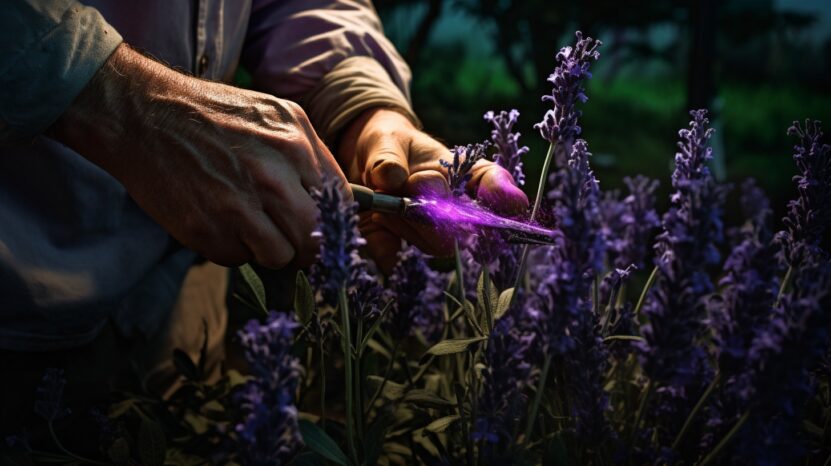
Preparing for Cuttings
Taking cuttings is a reliable method for propagating lavender. Start by preparing a rooting soil mix of 60% perlite and 40% peat moss. Use a sterilized cutting tray with drainage holes for best results. Select a hardwood branch near the top of the plant, looking for a leaf node, and cut a 3 1/2″ piece at a 45-degree angle below the node.
The Rooting Process
After preparing the cutting, remove leaves from the bottom two inches and scrape the skin off one side of the cutting’s bottom portion. Dip the cutting in rooting hormone powder and place it in the rooting soil, ensuring it remains undisturbed.
Maintain a moist soil environment and a warm temperature (68-70 degrees) for about 4 weeks until roots form. Gently tug on the cutting to check for resistance, indicating root formation.
Best Practices for Pruning Lavender
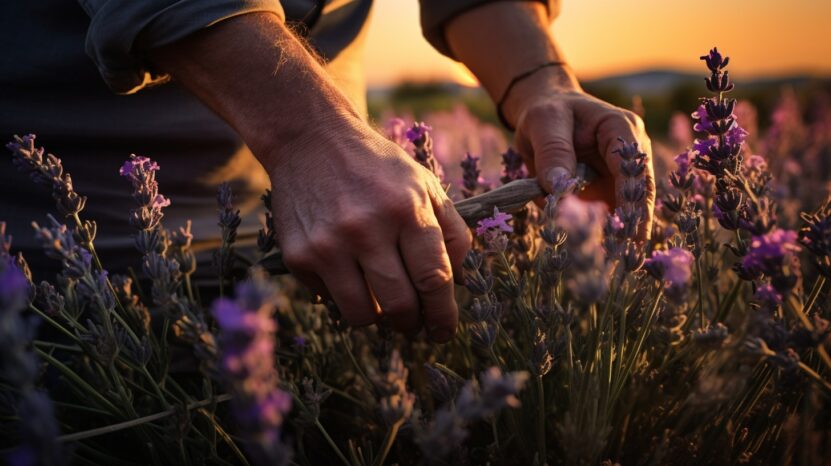
Timing and Techniques for Pruning
Pruning is essential for maintaining healthy lavender plants. In our experience, pruning in September and lightly in spring promotes better growth and appearance. Start pruning when plants are young, but avoid excessive pruning in the first year.
For English lavenders, prune hard at least once a year to maintain shape and encourage longevity. Established plants can be pruned back by 1/3 to 1/2 their size, but avoid cutting too far back to prevent damage.
Reviving Older Lavender Plants
Older, woody lavender bushes may benefit from drastic pruning to revive them. However, if the plant is over three years old and has never been pruned, it might be too late for rejuvenation. In such cases, replacing the plant is often a better option. If young green growth is visible above the woody part, prune back to within 2 inches of this new growth.
Harvesting Lavender for Drying
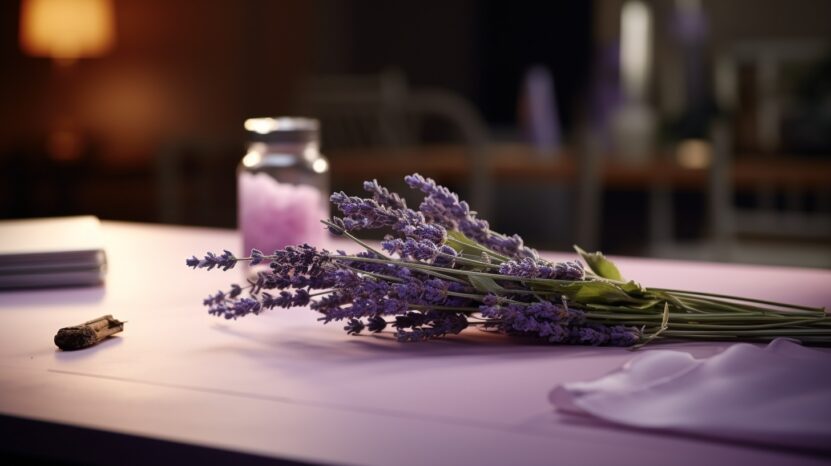
Optimal Time for Harvesting
The best time to pick lavender for drying is when the colors are dark or bright, and most flowering stems are in the bud stage. Harvest in the morning after the dew has dried, and avoid picking if it has rained within the last 24 hours. Use a sickle to cut the stems, aiming for a bundle size of around 100 stems.
Drying Process for Lavender
To dry lavender, strip the leaves off the stems and hang the bundles upside down in a warm, airy, and low-humidity area away from direct sunlight. The drying process typically takes 3 to 7 days. Once dry, store the lavender bundles in a cool area in a covered cardboard box. While some buds may fall off during drying, they can be collected for use in crafts.
Frequently Asked Questions
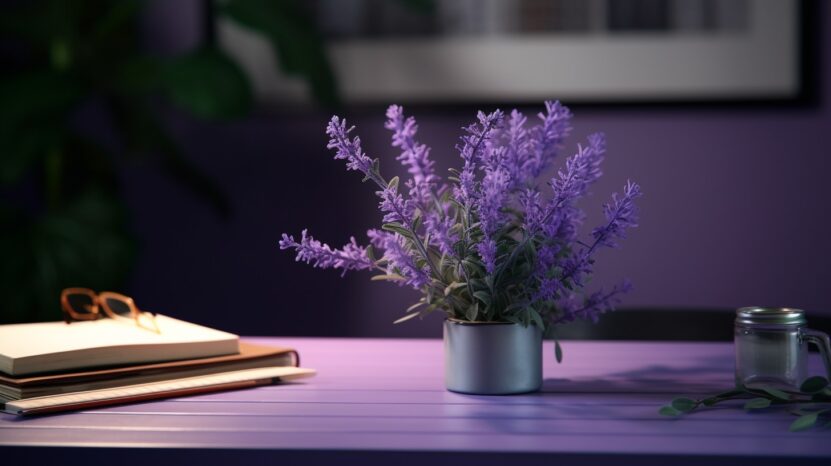
Can lavender plants survive in cold climates?
Yes, some lavender varieties, particularly certain English lavenders like ‘Folgate’, are known for their cold hardiness. However, they may require some winter protection in extremely cold climates.
How often should I water my lavender plants?
Lavender plants prefer dry conditions and should be watered sparingly. Overwatering can lead to root rot. It’s best to let the soil dry out between waterings.
Are there any lavender varieties that are particularly good for culinary uses?
Yes, ‘Royal Velvet’ and ‘Buena Vista’ are excellent for culinary use due to their subtle sweet flavors. They can be used in baking, cooking, and making herbal teas.
Can lavender be grown in containers?
Absolutely! Lavender can thrive in containers as long as they have good drainage. This is a great option for those with limited garden space or unsuitable soil conditions.
How do I deal with pests on my lavender plants?
Lavender is generally resistant to pests, but if you encounter issues, use a mild insecticidal soap. Avoid chemical pesticides, as they can harm the plant and reduce its fragrance.
Is it possible to grow lavender indoors?
Growing lavender indoors can be challenging, but it’s possible with enough sunlight. Place your lavender plant near a south-facing window for optimal light.
How long does a lavender plant typically live?
With proper care and pruning, a lavender plant can live and thrive for over 10 years. Regular pruning is key to maintaining its shape and promoting healthy growth.
Final Words
Lavender is more than just a plant; it’s a sensory experience that brings beauty, fragrance, and versatility to your garden. Whether you’re a seasoned gardener or a novice, incorporating lavender into your landscape can transform your outdoor space into a fragrant haven. Remember, the right variety, proper care, and a bit of love are all it takes to grow these enchanting blooms.
